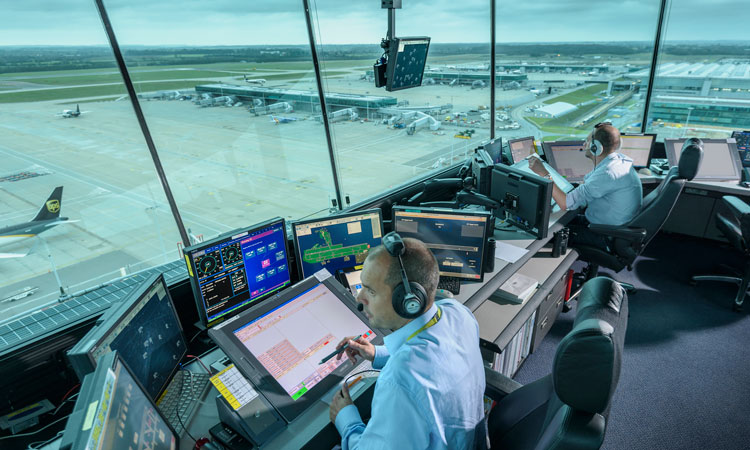Now is the time for a revolution in air traffic service provision
- Like
- Digg
- Del
- Tumblr
- VKontakte
- Buffer
- Love This
- Odnoklassniki
- Meneame
- Blogger
- Amazon
- Yahoo Mail
- Gmail
- AOL
- Newsvine
- HackerNews
- Evernote
- MySpace
- Mail.ru
- Viadeo
- Line
- Comments
- Yummly
- SMS
- Viber
- Telegram
- Subscribe
- Skype
- Facebook Messenger
- Kakao
- LiveJournal
- Yammer
- Edgar
- Fintel
- Mix
- Instapaper
- Copy Link
Posted: 15 March 2019 | Martin Rolfe | No comments yet
Martin Rolfe, NATS’ Chief Executive Officer, reveals the challenges posed by managing air traffic in today’s world, with rapidly increasing pressure to maximise capacity, resilience and performance in the face of growing demand and customer expectation.


Stansted Airport's air traffic control tower
All too often Air Navigation Service Providers (ANSPs) are being asked to pull the proverbial rabbit out of the hat and somehow find a way to deliver what’s needed without changing the airspace, updating any procedures or increasing the ground infrastructure, and without increasing costs. In truth, ANSPs have become much more than their name suggests.
The ANSPs’ pivotal role within national infrastructure is now being recognised; in particular the direct impact they have on an airport’s strategy, an airline’s reputation and the health of the wider economy. In today’s evolving aviation market, those that simply provide an air traffic control (ATC) function are being left behind. It’s time to think differently about how to meet the specific needs of each customer, and tailor solutions accordingly. Simple customer and supplier models are no longer the only or the best option available. It doesn’t have to be in-house, or even contracted to a single provider. There are other alternatives emerging.
In-house air navigation service provision can give an airport cost efficiencies, business and operational alignment but as it grows, the wider expertise and experience of an ANSP with other contracts may be worth considering. It could mean a hybrid approach; ATC expertise supporting in-house management, or in-house management with third party operational staff provisions are models that can both provide the capability without losing the control that makes some customers worry about outsourcing.
The traditional option of a single outsourced provider also faces challenge, not least of which is the lack of business understanding and expertise they are likely to bring, beyond the core ATC provision. Airports increasingly need seamless interactions with their wider support functions beyond the terminal manoeuvring area.
This leads to a greater expectation of collaborative working, sharing the commercial aspects of operational improvements to drive new standards in customer focus. ATC is central to the wide range of business information and decision-making that can make the difference for their customer.
This could be done through a simple incentivised arrangement or even more productively, through a partnership option, with the airport working with other ANSPs to complement each other’s capabilities, or with other industry specialists.
It is also more likely to lead to specific and scalable solutions for individual customer needs which support ICAO’s vision of ‘No Country Left Behind’. Suppliers driven primarily by sales targets too often suggest solutions that customers are not ready for, they cannot afford, and which don’t deliver.
ATC is one of the last industries to recognise the difference between market-led rather than operationally-driven solutions. Even now, many ANSPs think they can develop their own idea of what the customer wants, rather than delivering what the customers know they need.
These are exciting times for air traffic management (ATM) providers and their customers; a changing world demands innovation and demonstrable value, and closer links between the two.
Customers expect solutions that meet their specific needs. They should be able to count on their ATM strategic partner to deliver customer focused service provision, whether that’s through the lowest cost ATC resource provision contract they can find, or via a fully integrated and scalable long-term solution that includes industry leading technologies.
Meanwhile, ATM service providers have an almost limitless horizon of opportunities opening up in front of them, should they be willing to explore beyond the traditional, constraining stereotypes of what an ANSP should be and do.
Air traffic is undoubtedly a complex sector of the aviation jigsaw which requires considerable expertise and experience, but it is far from the only element of the aircraft journey. The ANSP that can pick up on those needs and nuances will be able to provide exciting solutions that customers will find hard to ignore.
Biography
Martin Rolfe was appointed as CEO of NATS in May 2015 and is responsible for the 24/7 air traffic operation. He joined NATS as Managing Director of Operations in March 2012, overseeing the delivery of NATS’ en-route business. Martin has worked in the air traffic management domain for 18 years leading large multinational teams across Europe, the U.S., the Commonwealth of Independent States and the Far East, with customers including air navigation service providers, central government departments and military organisations. Prior to joining NATS he worked for Lockheed Martin, where he was Managing Director of the UK Civil business.
Issue
Related topics
Air traffic control/management (ATC/ATM), Capacity, Passenger volumes, Regulation and Legislation, Safety
Related organisations
International Civil Aviation Organization (ICAO), National Air Traffic System (NATS)


















